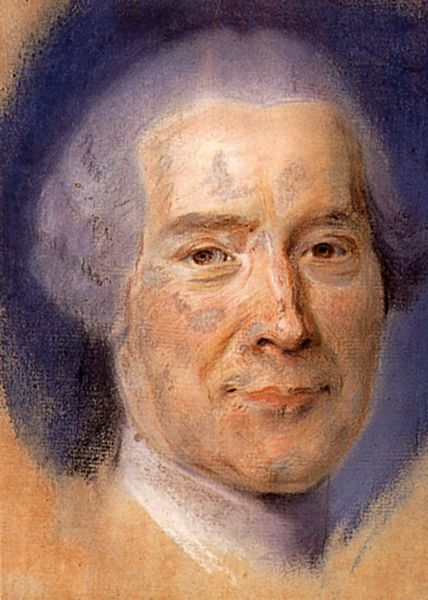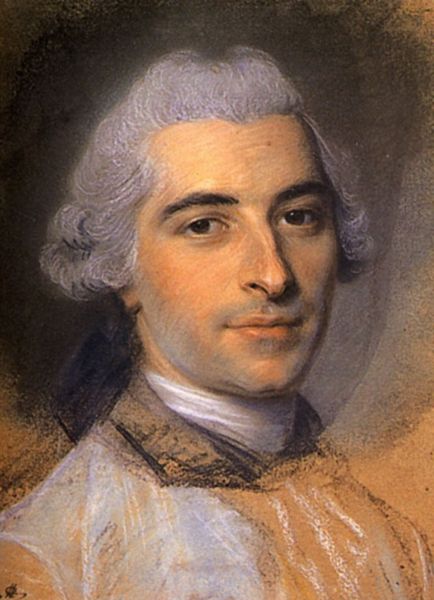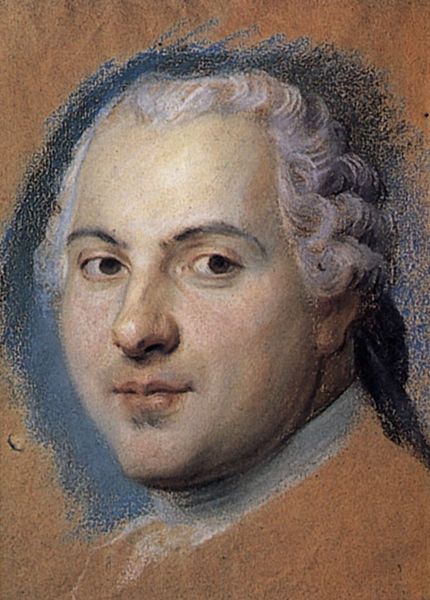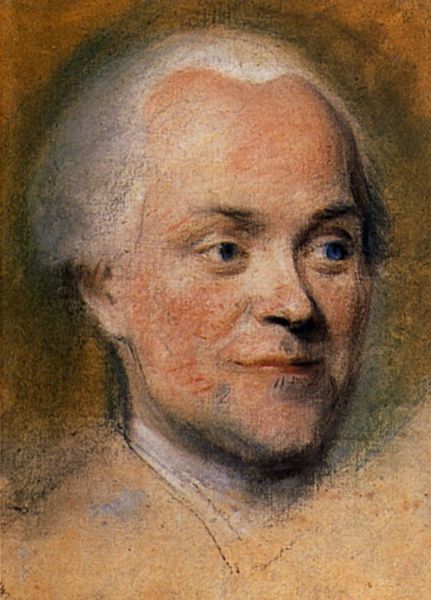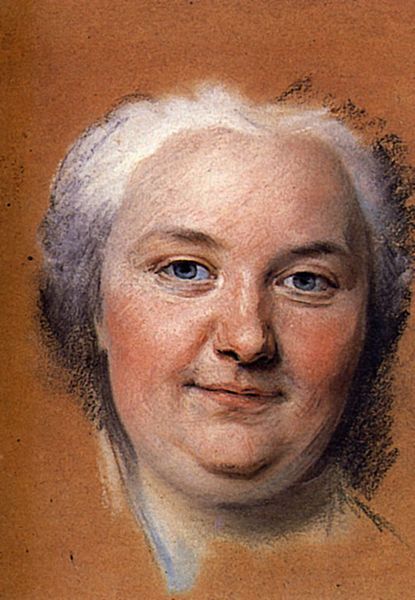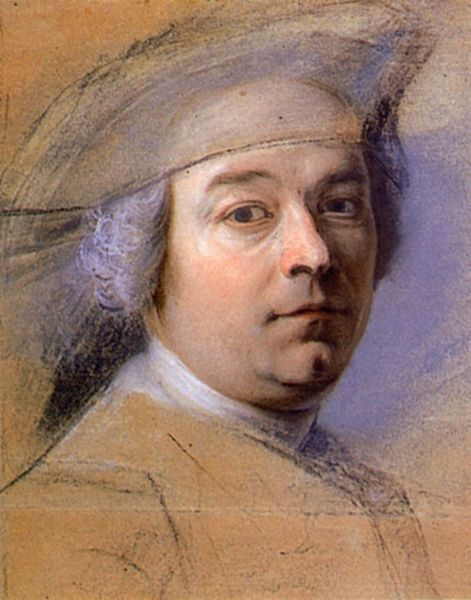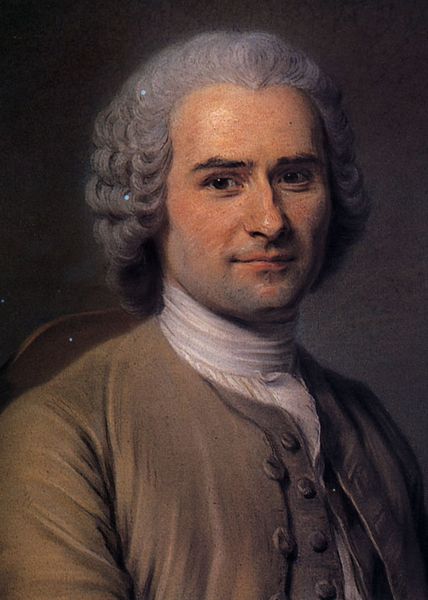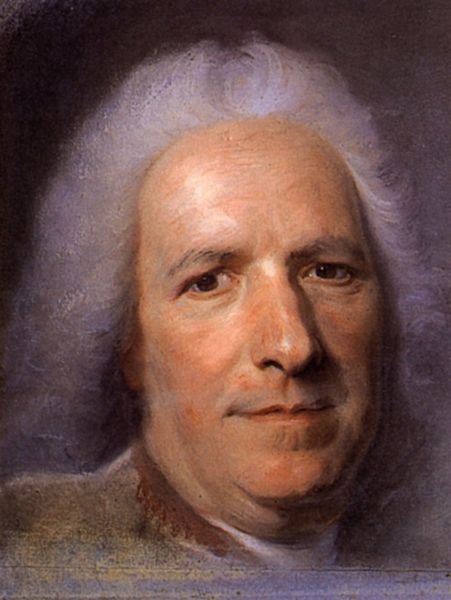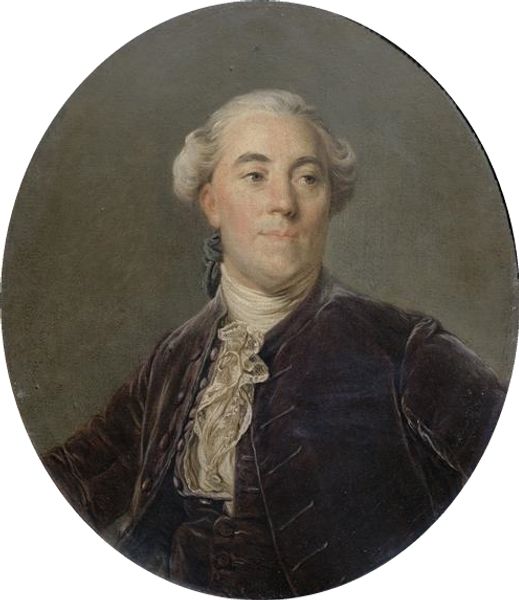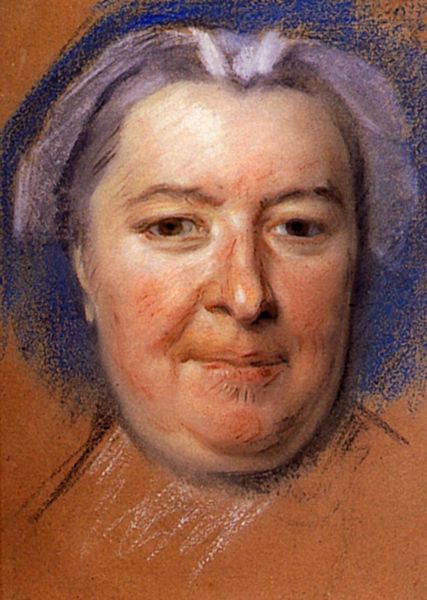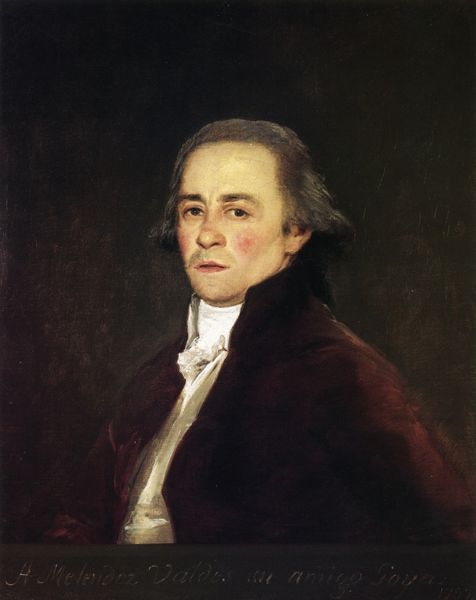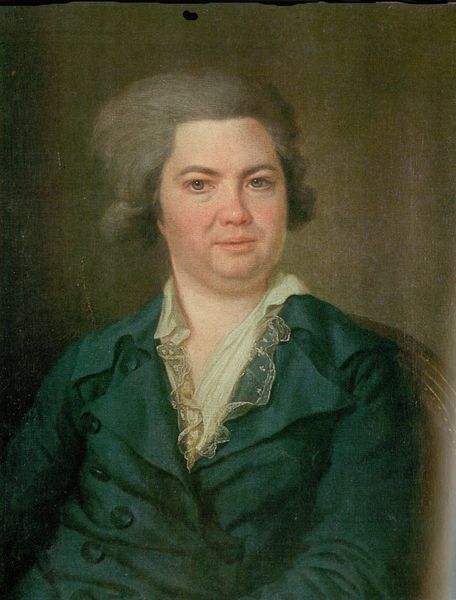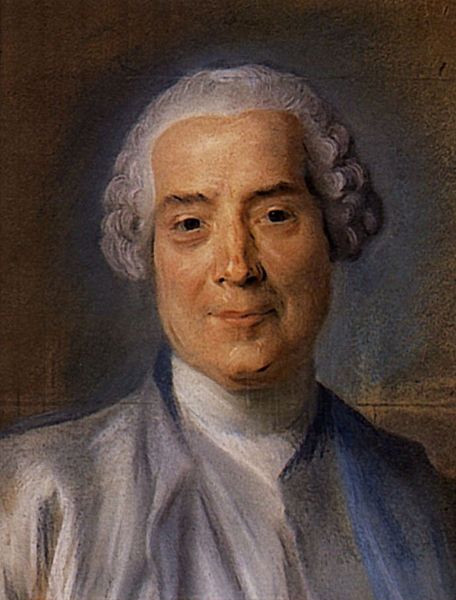
drawing, pastel
#
portrait
#
drawing
#
self-portrait
#
head
#
face
#
portrait reference
#
male-portraits
#
portrait head and shoulder
#
animal portrait
#
animal drawing portrait
#
nose
#
portrait drawing
#
facial study
#
pastel
#
facial portrait
#
forehead
#
portrait art
#
fine art portrait
#
rococo
#
digital portrait
Copyright: Public domain
Curator: Looking at this artwork, I am struck by a sense of calm. The soft hues, especially in the face, suggest gentleness and poise. Editor: Yes, it has an introspective feel. We're looking at "Study for Portrait of Unknown Man", a pastel drawing by Maurice Quentin de La Tour, from perhaps the mid-18th century, although the exact date remains unknown. What really grabs me are the clear indications of Rococo style evident in the sitter's poised elegance. Curator: Rococo favored asymmetry, grace, and an ornamental sensibility, aspects we see here but restrained. Do you think there are any specific symbolic choices at work beyond simply a fashionable aesthetic of the day? Editor: I think the unknown identity itself becomes a powerful symbol. The anonymity gives the work broader societal relevance. He stands for someone, a type, perhaps a rising member of the bourgeoisie keen to signal their cultural sophistication? The work enters an art market still shaping ideas about success. Curator: Intriguing. Perhaps the unknown sitter's dress symbolizes this. The emphasis on an average look symbolizes the values of everyday elegance. In his thoughtful gaze, he shows no arrogance. He has intelligence without excess ostentation, appealing to its contemporary market, perhaps? Editor: It's certainly about a constructed public image. One element that stands out for me is how he controls this sense of modesty and refinement, but that lack of specifics still places a barrier of distance. Who was Maurice's audience and the historical factors involved in producing portraiture as social promotion are more significant than individual emotion. Curator: I can see the merit in this interpretation, yes. But I return to the eyes. Despite being a 'study,' they seem to pierce directly out. To me, the success of such portraiture hinges on a relatable humanity, bridging eras via persistent features, and enduring long beyond that person's own specific life. Editor: In this view, these faces carry more social and psychological weight—transcending simply a portrait and acting as enduring signals for shared cultural memory. An enduring visual link connecting his ambitions and that of its modern audience. A powerful suggestion of continuity beyond the individual, don't you think? Curator: I find that resonates well—capturing shared traits through visual symbols and implying shared societal aspirations through such symbols. Thanks for shedding more light! Editor: Absolutely. A perfect point to conclude our discussion and allows us both new and profound insights.
Comments
No comments
Be the first to comment and join the conversation on the ultimate creative platform.
